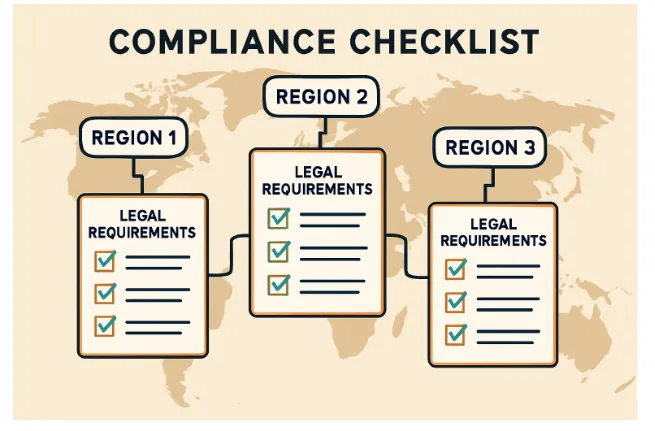Africanized Honey Bees Continue Their March Across America
The steady northward expansion of Africanized honey bees across the United States represents one of the most significant ecological phenomena of the past several decades. These hybrid insects, often referred to as “killer bees” in popular media, have transformed the landscape of American beekeeping and continue to establish new colonies in previously unoccupied territories. Their relentless march has captured the attention of scientists, beekeepers, and the general public alike, raising important questions about biodiversity, agricultural impacts, and public safety.
According to the website https://www.fightthebite.net/, understanding the behavior and distribution patterns of these aggressive pollinators has become increasingly crucial as they expand their range throughout the southern and western United States. The story of Africanized honey bees in America begins with a scientific experiment gone awry in Brazil during the 1950s, when geneticist Warwick Kerr attempted to create a more productive bee by crossing European honey bees with African subspecies. Some of these hybrid bees escaped captivity and began spreading throughout South America, eventually reaching Mexico and crossing into the United States in 1990.
The distinctive characteristics that define Africanized honey bees stem from their African ancestry, which evolved in environments where aggressive defense against predators was essential for survival. These bees exhibit heightened defensive behaviors, responding to perceived threats more quickly and in greater numbers than their European counterparts. They also demonstrate remarkable adaptability to various climates and environments, allowing them to establish successful colonies across diverse geographical regions.
The geographical expansion of Africanized honey bees has followed predictable patterns influenced by climate, terrain, and available resources. Initially confined to the southwestern border states, these bees have gradually moved eastward and northward, establishing permanent populations in Texas, New Mexico, Arizona, Nevada, California, Oklahoma, Arkansas, Louisiana, and Florida. Their spread has been particularly notable in urban areas, where they often build nests in unexpected locations such as water meter boxes, abandoned vehicles, and residential structures.
Climate change has potentially accelerated the northward migration of Africanized honey bees, as warmer temperatures create more suitable conditions for their survival in previously inhospitable regions. Researchers have observed that these bees can now survive winter conditions that would have been fatal to their populations just decades ago. This adaptation has allowed them to establish year-round colonies in areas where they were once limited to seasonal presence.
The ecological impact of Africanized honey bees extends far beyond their reputation for aggression. These insects are exceptionally efficient pollinators, contributing significantly to the reproduction of native plants and agricultural crops. Their foraging behavior is more intensive than European honey bees, with individual workers covering greater distances and working longer hours. This enhanced productivity has proven beneficial for certain ecosystems, particularly in arid regions where pollination services are crucial for plant survival.
However, the presence of Africanized honey bees has also created challenges for commercial beekeeping operations. Their tendency to swarm frequently and their aggressive nature make them difficult to manage using traditional beekeeping methods. Many commercial beekeepers have had to adapt their practices, investing in protective equipment and modifying hive management techniques to safely work with these more defensive insects.
The agricultural sector has experienced mixed results from the expansion of Africanized honey bees. While their superior pollination capabilities have benefited certain crops, their unpredictable behavior has made them unsuitable for commercial pollination services that require docile, manageable bee colonies. This has led to increased costs for farmers who rely on contracted pollination services, as beekeepers must now screen their colonies more carefully and implement additional safety measures.
Public safety concerns have accompanied the spread of Africanized honey bees throughout their new territories. While fatalities remain relatively rare, the increased likelihood of defensive stinging incidents has prompted changes in emergency response protocols and public education campaigns. First responders have received specialized training to deal with bee-related emergencies, and communities have developed guidelines for identifying and reporting potentially dangerous bee colonies.
The genetic legacy of Africanized honey bees has become increasingly complex as they continue to interbreed with existing European honey bee populations. This ongoing hybridization has created a gradient of characteristics rather than distinct populations, making it difficult to determine the exact boundaries of Africanized bee territory. Genetic analysis has revealed that many bee colonies in the southern United States now contain varying degrees of African ancestry, even in areas not officially classified as Africanized bee zones.
Research into the future distribution of Africanized honey bees suggests that their expansion will continue, though at a potentially slower pace as they encounter less suitable climates in northern regions. Computer models predict that these bees may eventually establish populations as far north as the central United States, though their ability to survive harsh winters remains a limiting factor. The timeline for this expansion depends heavily on climate patterns and the bees’ continued adaptation to new environments.
The management of Africanized honey bee populations requires a coordinated approach involving government agencies, researchers, beekeepers, and the public. Monitoring programs track their spread and population dynamics, while education initiatives help communities recognize and respond appropriately to these insects. The focus has shifted from attempting to prevent their spread to learning how to coexist with them safely and productively.
As Africanized honey bees continue their march across America, their impact on ecosystems, agriculture, and human communities will undoubtedly evolve. Understanding their behavior, ecology, and management requirements remains essential for minimizing negative consequences while maximizing their potential benefits as pollinators in an increasingly complex environmental landscape.






